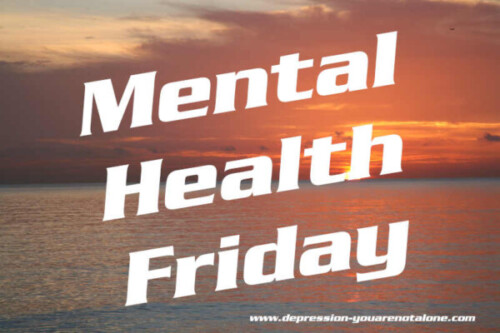Mental Health Friday 2023-12-22
On Mental Health Friday, we post, in alphabetical order, one per week, information on mental health disorders. Mental Health Friday is for informational purposes only, and is in no way meant to diagnose, treat or cure any disease. Please do not self diagnose and seek professional help for what ails you.
Link: FindTreatment.gov is an online source of information for persons seeking substance use and/or mental health treatment facilities in the United States or U.S. Territories.
.
Other Specified Dissociative Disorder
Editorial Team
Other Specified Dissociative Disorder (OSDD) is a diagnostic category within the spectrum of dissociative disorders outlined in the Diagnostic and Statistical Manual of Mental Disorders (DSM-5). It’s important to note that updates or changes to psychiatric classifications and criteria may have occurred since then.
Definition of Dissociative Disorders: Dissociative disorders involve disruptions or discontinuities in the normal integration of consciousness, memory, identity, and perception. Individuals with these disorders may experience a range of dissociative symptoms, such as amnesia, identity confusion, depersonalization, derealization, and identity alteration.
Other Specified Dissociative Disorder (OSDD): OSDD is a category used when an individual presents with symptoms that cause significant distress or impairment, but the symptoms do not meet the full criteria for other established dissociative disorders, such as Dissociative Identity Disorder (DID) or Dissociative Amnesia.
Key features of OSDD may include:
- Dissociation and Identity Disturbance: Individuals with OSDD may experience episodes of dissociation where there is a disconnection from thoughts, identity, consciousness, or memory. Identity disturbance may be present, but it might not be as pronounced as in DID.
- Amnesia and Memory Gaps: Similar to other dissociative disorders, individuals with OSDD may experience amnesia or memory gaps, which can vary in duration and severity. These memory disruptions are not due to normal forgetfulness but are rather a result of the dissociative process.
- Depersonalization and Derealization: Depersonalization involves feeling detached from oneself, as if observing one’s own body or thoughts from a distance. Derealization involves a sense of unreality or detachment from the external world. Both depersonalization and derealization can be part of the symptomatology of OSDD.
- Trauma as a Common Precursor: Like other dissociative disorders, OSDD is often associated with a history of trauma, particularly during childhood. Trauma can contribute to the development of dissociative symptoms as a way for the individual to cope with overwhelming experiences.
- Not Otherwise Specified (NOS): The term “Other Specified” indicates that the specific symptoms or presentation do not fit the criteria for any other dissociative disorder but still cause significant distress or impairment. This category allows for a more flexible diagnosis to capture the diverse presentations of dissociative symptoms.
Treatment: Treatment for OSDD typically involves psychotherapy, particularly approaches that focus on the integration of dissociated aspects of identity and the processing of traumatic memories. Cognitive-behavioral therapy (CBT) and dialectical behavior therapy (DBT) may be used to address symptoms and enhance coping skills.
It’s crucial to consult with mental health professionals, such as psychiatrists or clinical psychologists, for a thorough assessment and accurate diagnosis. Additionally, ongoing research and updates to diagnostic criteria may influence our understanding of OSDD and other mental health conditions.

